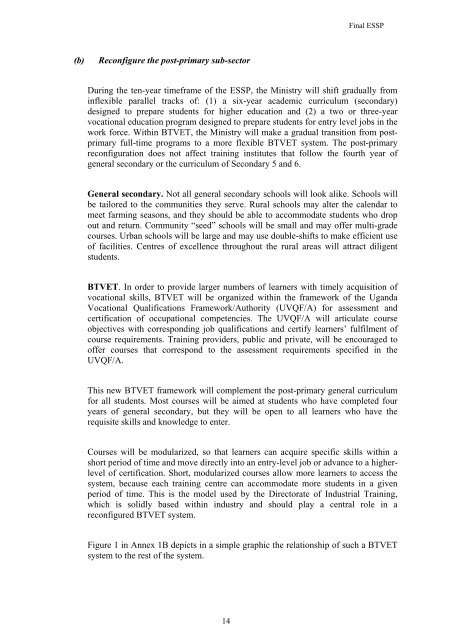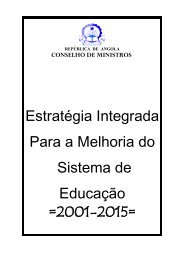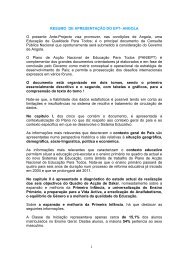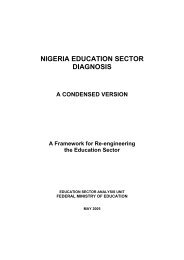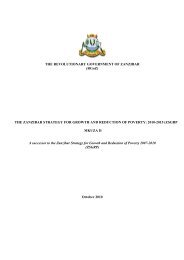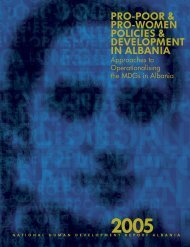Education Sector Strategic Plan 2004-2015 - Planipolis
Education Sector Strategic Plan 2004-2015 - Planipolis
Education Sector Strategic Plan 2004-2015 - Planipolis
You also want an ePaper? Increase the reach of your titles
YUMPU automatically turns print PDFs into web optimized ePapers that Google loves.
(b) Reconfigure the post-primary sub-sector<br />
Final ESSP<br />
During the ten-year timeframe of the ESSP, the Ministry will shift gradually from<br />
inflexible parallel tracks of: (1) a six-year academic curriculum (secondary)<br />
designed to prepare students for higher education and (2) a two or three-year<br />
vocational education program designed to prepare students for entry level jobs in the<br />
work force. Within BTVET, the Ministry will make a gradual transition from postprimary<br />
full-time programs to a more flexible BTVET system. The post-primary<br />
reconfiguration does not affect training institutes that follow the fourth year of<br />
general secondary or the curriculum of Secondary 5 and 6.<br />
General secondary. Not all general secondary schools will look alike. Schools will<br />
be tailored to the communities they serve. Rural schools may alter the calendar to<br />
meet farming seasons, and they should be able to accommodate students who drop<br />
out and return. Community “seed” schools will be small and may offer multi-grade<br />
courses. Urban schools will be large and may use double-shifts to make efficient use<br />
of facilities. Centres of excellence throughout the rural areas will attract diligent<br />
students.<br />
BTVET. In order to provide larger numbers of learners with timely acquisition of<br />
vocational skills, BTVET will be organized within the framework of the Uganda<br />
Vocational Qualifications Framework/Authority (UVQF/A) for assessment and<br />
certification of occupational competencies. The UVQF/A will articulate course<br />
objectives with corresponding job qualifications and certify learners’ fulfilment of<br />
course requirements. Training providers, public and private, will be encouraged to<br />
offer courses that correspond to the assessment requirements specified in the<br />
UVQF/A.<br />
This new BTVET framework will complement the post-primary general curriculum<br />
for all students. Most courses will be aimed at students who have completed four<br />
years of general secondary, but they will be open to all learners who have the<br />
requisite skills and knowledge to enter.<br />
Courses will be modularized, so that learners can acquire specific skills within a<br />
short period of time and move directly into an entry-level job or advance to a higherlevel<br />
of certification. Short, modularized courses allow more learners to access the<br />
system, because each training centre can accommodate more students in a given<br />
period of time. This is the model used by the Directorate of Industrial Training,<br />
which is solidly based within industry and should play a central role in a<br />
reconfigured BTVET system.<br />
Figure 1 in Annex 1B depicts in a simple graphic the relationship of such a BTVET<br />
system to the rest of the system.<br />
14


